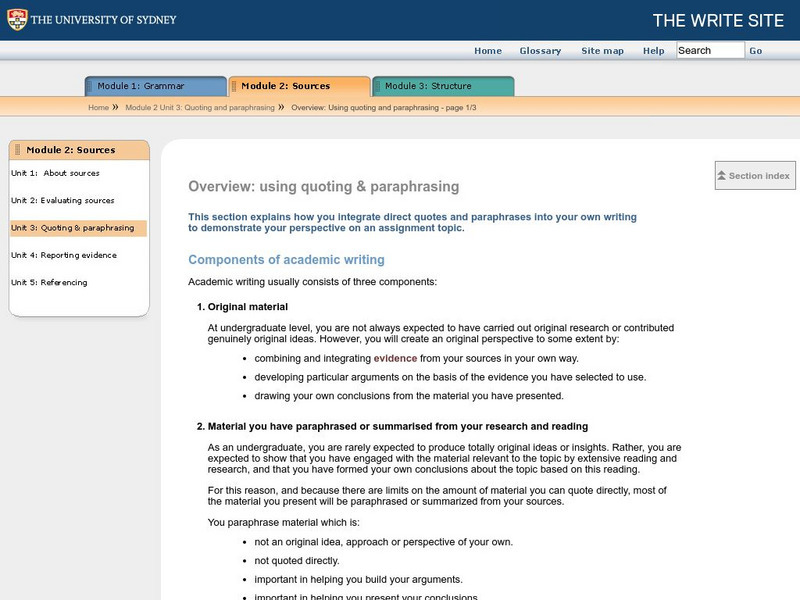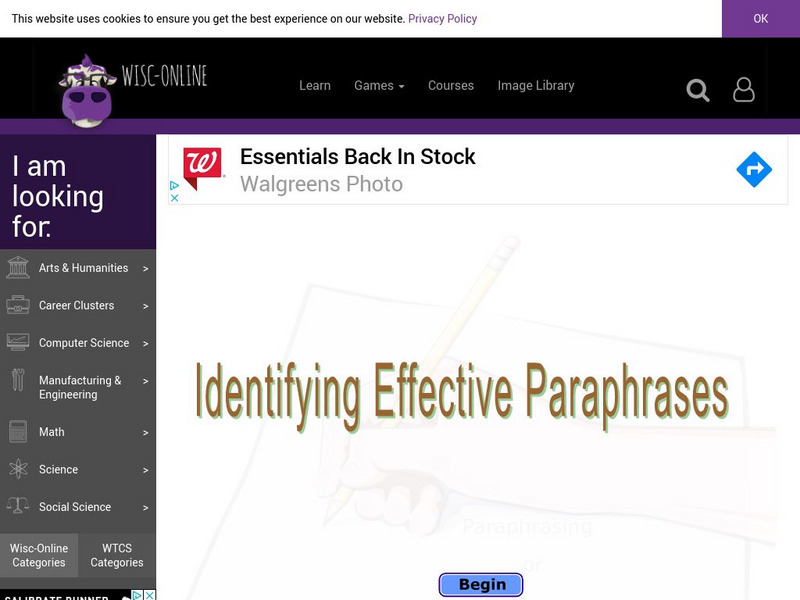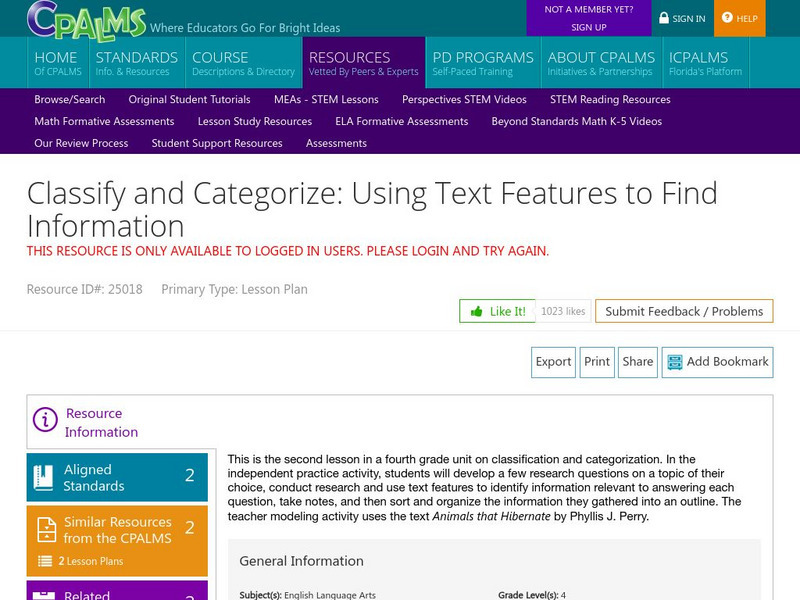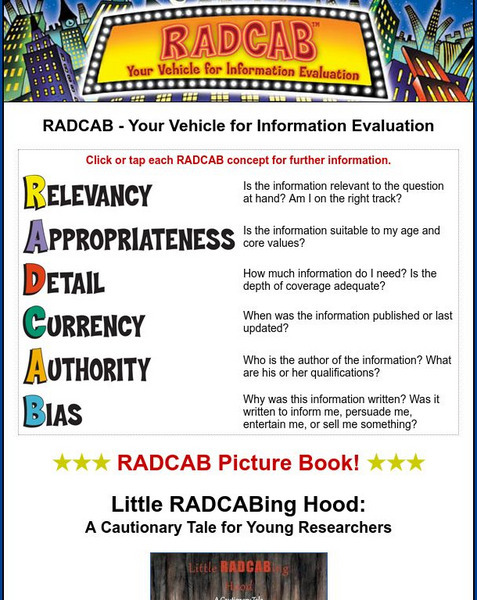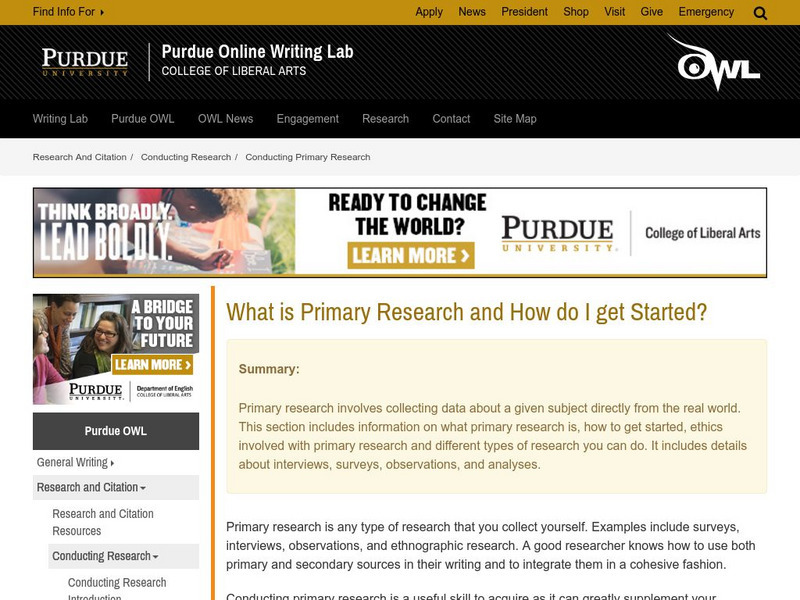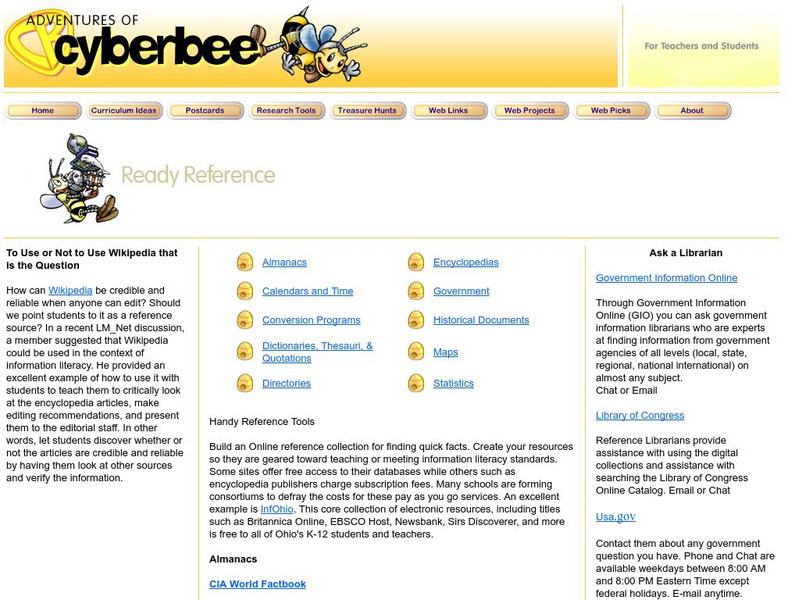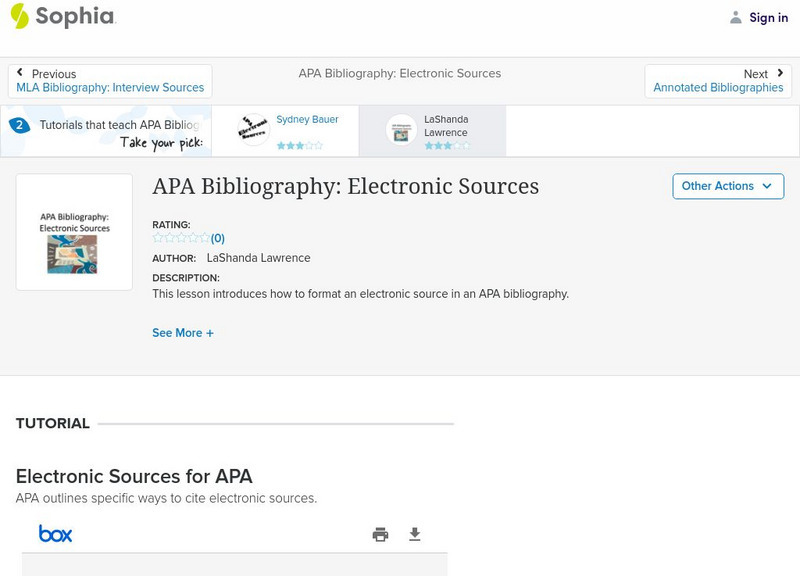Hi, what do you want to do?
Other
Plagiarism: Teaching About Plagiarism
The best way to prevent plagiarism is to educate students on how to properly conduct research, cite, quote, and produce unique and original work. This site offers a series of video explaining plagiarism and ways to avoid it.
University of Sydney (Australia)
The Write Site: Overview: Using Quoting & Paraphrasing
This learning module explains the components of academic writing. The module includes the following topics: original material, paraphrased content, summarized information, and direct quotations.
Wisc-Online
Wisc Online: Identifying Acceptable Paraphrases
This learning module defines paraphrasing and discusses how to paraphase, and then they identify acceptable paraphrases of source material.
Library of Congress
Loc: How to Cite Digitized Primary Sources
Learn from the Library of Congress how to correctly cite the many electronic resources available in their collection. Films, legal documents, photographs, maps, sound recordings and other unusual cases are covered. Be sure you click on...
CPALMS
Cpalms: Classify and Categorize: Using Text Features to Find Information
[Free Registration/Login Required] Students will develop research questions, classify information into an outline form, and use the features of nonfiction writing to identify information relevant to a research question.
Better Lesson
Better Lesson: Avoiding Plagiarism and Citing Sources
In this scaffolded lesson, students engage in practice with determining whether or not research has been plagiarized. A short video demonstration is included. [03:44] This lesson addresses all three College and Career Readiness Standards...
Better Lesson
Better Lesson: What Is Plagiarism?
In this lesson, students write summaries of researched information in their own words and quote text accurately.
University of Wisconsin
University of Wisconsin: Writing Center: Mla Documentation
This site outlines the basics of the MLA (Modern Language Association) style of documentation and includes links to handouts about in-text citations, the works cited page, and how to cite electronic sources. Several sample citations and...
University of Wisconsin
University of Wisconsin: Writing Center: Apa Documentation
This site provides information on the APA (American Psychological Association) documentation style. The information can be downloaded in PDF format. It refers to several handouts dealing with parenthetical references, reference lists,...
Other
Radcab: Your Vehicle for Information Evaluation
How do you know you are using a trustworthy source when writing a research paper? Use this acronym for easy questions to ask yourself to make sure you have a reliable source. Click on each one for further details.
Other
How to Compile a Bibliography
This site provides basic guidelines and examples for how to compile a bibliography. Grade levels listed 1st through 6th.
Online Writing Lab at Purdue University
Purdue University Owl: Primary Research
Learn the difference between primary and secondary research as well as some different types of primary sources that can be used when gathering research.
Online Writing Lab at Purdue University
Purdue University Owl: What Is Primary Research and How Do I Get Started?
Learn the difference types of primary sources and how to use them as a part of your research.
Alabama Learning Exchange
Alex: How to Cite Online Resources
After research in the Alabama Virtual Library, students will write a paragraph essay and use an online citation utility to create bibliographic citations for an online encyclopedia, an online magazine, and a print resource. Copying and...
Other
Power Up What Works: Conducting Research
This resource describes the first phase of a Grade 6 teacher's instructional activity where students develop a plan for working on a research project and then collect information. Each student has chosen a topic relating to how the...
ReadWriteThink
Read Write Think: Inquiry on the Internet: Evaluating Web Pgs for Class Collection
A four-session lesson plan that leads to a class collection of resources is a solid introduction to both searching skills and evaluation. Could be used with any number of subject areas.
PBS
Pbs Learning Media: Interactive Lessons
Explore the wide range of interactive lessons available to students and teachers on PBS LearningMedia. Each interactive lesson lets you work at your own pace while you learn -- using media and engaging tools that save your work in the...
University of California
Cal Heritage Collection: Using Primary Sources
This resource covers what primary sources are, where we can find them, and how we can assess them in the classroom.
Cyberbee
Cyber Bee: Ready Reference
This site is a tool to help students hone their reference skills.
Sophia Learning
Sophia: Apa Bibliography: General Format
This lesson introduces how to format a bibliography in APA style.
Sophia Learning
Sophia: Apa Bibliography: Electronic Sources: Lesson 2
This lesson introduces how to format an electronic source in an APA bibliography. It is 2 of 2 in the series titled "APA Bibliography: Electronic Sources."
Sophia Learning
Sophia: Apa Bibliography: Periodical Sources: Lesson 2
This lesson introduces how to format a periodical source in an APA bibliography. It is 2 of 2 in the series titled "APA Bibliography: Periodical Sources."
TES Global
Blendspace: Plagiarism
A learning module that includes eighteen links to videos, images, and websites explaining plagiarism and the problems it creates.
TES Global
Blendspace: Evaluating Sources
A seven-part learning module with links to texts, videos, slides, and a quiz to use while learning how to evaluate research sources.






